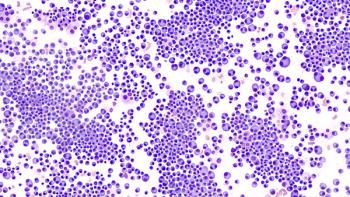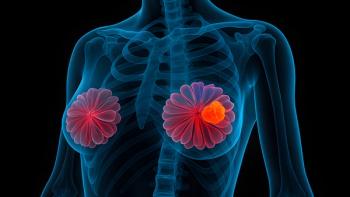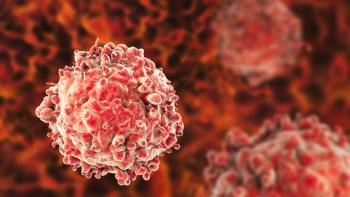
- June 2025
- Volume 19
- Issue 2
Case Study: Bridging the Gap for Patients With Metastatic CRC
Advanced practice providers have the opportunity to instill hope in patients through education and personalized care.
Hope: a 4-letter word that can provide positivity and optimism in difficult situations. Unfortunately, when patients are faced with a stage IV cancer diagnosis, hope tends to dissipate based on statistics and the experiences of patients or their loved ones with the disease.
As providers, how do we foster a better sense of hope in our patient population? Does instilling hope stem from being a listening ear, providing support, and managing patients’ symptoms, or is it based on the potential for future treatments should the current regimen fail?
In colorectal cancer, the overall survival of stage IV metastatic disease is approximately 11% to 14%.1 To provide optimal care for these patients and maintain hope and realistic expectations, it may be necessary to employ an interdisciplinary approach individualized to each patient.
Meet Patient LT
LT is an active 56-year-old patient who works in the medical field with a past medical history of migraines, hypothyroidism, gastroesophageal reflux disorder, and tobacco use. She presented to her primary care clinic in July 2023 for an annual examination and was found to have mild elevation in her aspartate aminotransferase and alanine aminotransferase levels.
Her primary care provider ordered an ultrasound, which showed multiple liver lesions, predominantly right-sided. She underwent a colonoscopy in August 2023 that revealed 3 polyps in her sigmoid colon in addition to a polypoid, ulcerated, nonobstructing mass in her ascending colon. The mass was partially circumferential with no evidence of bleeding. The following day, she had a liver biopsy that confirmed a metastatic mucinous adenocarcinoma suggestive of a colorectal primary.
She was referred to the medical oncology department to establish care and her case was initially presented in the metastatic colorectal cancer (mCRC) tumor board, which recommended the initiation of chemotherapy. This multidisciplinary tumor board comprises representatives from medical oncology, surgical oncology, interventional radiology, colorectal surgery, transplant surgery, and cancer navigation specialties.
The gastrointestinal (GI) medical oncology advanced practice provider (APP) has a central role in the mCRC conference. Bimonthly meetings are coordinated by the GI APP, including the collection of patient data, case presentations, and sharing recommendations with the referring providers. If additional referrals are needed, the APP ensures orders are placed and appropriate colleagues are aware of the referral.
LT Begins Her Treatment Path
LT’s chemotherapy was initiated with
Her case was again presented at the mCRC tumor board, and recommendations included initiation of treatment with a hepatic arterial infusion (HAI) pump and transplant evaluation. Studies have shown that the concurrent use of HAI pumps and systemic chemotherapy improved disease-free survival from 14 months with systemic treatment alone to 20 months with the combination treatment and increased overall survival from 57 months to 84 months.2 The group ultimately recommended the use of the HAI pump as a potential bridge to transplant if she were deemed a transplant candidate. The goal of the HAI pump was to control her hepatic disease burden and prove disease stability prior to transplant. With new options presented to her, she began to have more hope and optimism regarding her prognosis.
In February 2024, LT underwent a right colectomy with terminal ileum resection along with appendectomy and
Upon further evaluation, there was no definite response to treatment. Next-generation sequencing showed a KRAS G12S mutation as well as pathogenic alterations in the APC and TP53 genes.
Moving to the Next Line of Therapy
LT began HAI infusions in March 2024 with floxuridine (FUDR), a pro-drug to 5-fluorouracil (5-FU) that is highly metabolized in the first pass through the liver. Her baseline alkaline phosphatase (ALP) was 79, taken prior to her first FUDR infusion. Her starting dose of FUDR was 226 mg. She required her first dose reduction starting with her fourth dose of FUDR.
At that time, LT’s ALP increased to 155. Per the institution’s HAI protocol, the increased level between 1.5 and 2 times her baseline required a 20% reduction in dose. Following the pump flush for cycle 4, her ALP again increased, to between 1.2 and 1.5 times her baseline, resulting in a second 20% decrease for a total dose of 147.2 mg. LT continues to receive FUDR infusions, and she has not required further dose reductions to date.
LT was simultaneously referred to transplant surgery to evaluate her candidacy for a liver transplant. Based on testing, she was deemed to be a good candidate for transplant. Discussions were held about the types of transplants available, and the surgeons recommended a living donor transplant. She agreed with this plan, which began the process to find a suitable match. However, her carcinoembryonic antigen (CEA) level was too high to obtain insurance authorization, and a resubmission was planned once her level fell below 80 ng/mL.
She continued chemotherapy with systemic 5-FU and FUDR via the HAI pump. Her CEA level started to decline, falling below the recommended threshold of 80 ng/mL. The transplant surgeon resubmitted her case for coverage approval, but the surgery was again deemed not a covered procedure.
As a result, LT’s attitude toward treatment began a downward spiral with negativity creeping into the forefront of her thoughts.
Instilling Hope as an Advanced Practice Provider
The GI APP has
In conjunction with the
The use of an interdisciplinary approach and innovative treatment modalities are crucial in the care of our patients. Further studies are needed to provide a solid basis for innovative or combination treatments that insurance companies will cover.
Even in the face of available alternative treatments, however, unexpected obstacles can appear, and APPs play a significant role in the education and support of patients to help navigate these challenging situations.
Providing hope to patients at all junctions of care involves transparency, open communication, and validation of emotions at each step, and the APP has the knowledge and empathy to
References
- Ilyas MIM. Epidemiology of stage IV colorectal cancer: trends in the incidence, prevalence, age distribution, and impact on life span. Clin Colon Rectal Surg. 2023;37(2):57-61. doi:10.1055/s-0043-1761447
- Chaudhry S, Fields RC, Grierson PM, Lim KH. Combined systemic and hepatic artery infusion pump chemo-therapy as a liver-directed therapy for colorectal liver metastasis-review of literature and case discussion. Cancers (Basel). 2021;13(6):1283. doi:10.3390/cancers13061283
Articles in this issue
Newsletter
Knowledge is power. Don’t miss the most recent breakthroughs in cancer care.
















































































